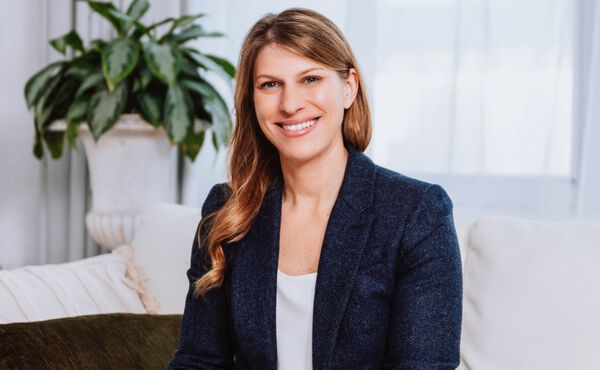Today’s class is full of practical solutions for night-time waking. Practice a calming breathing trick to make being up when everyone is asleep a stress-free moment, and learn the art of the power nap the next day.
Article: The art of the power nap
“I always say to think of a nap as a daytime sleep snack,” explains Dr Shelby Harris. “Naps improve attention and alertness plus decrease stress. They’re also great if you don’t have trouble with sleep at night but you want a boost of energy in the afternoon. The key is to do it properly.” Here’s how:
Nap in bed, not on the sofa. The more you can teach your body that bed is the only place to sleep, the better your naps and night time sleep will be.
Treat your nap like bed time. If you’re going to take a nap. Take. A. Nap. Change into comfortable clothing, and make your room like a beautiful cave; dark, cool and quiet.
Napping in bed not an option? Try and find somewhere you can at least lie down or recline. Light-blocking eye-masks can help to create darkness and earplugs can help make a noisy environment that much quieter.
Keep it to 20 minutes of sleep, max. Any longer than that and you will go into too deep a sleep and you will feel groggy when you wake up. Plus it can impact your night time sleep.
Set an alarm for 30 minutes. That gives you 10 minutes to drift off and 20 minutes of napping time. As soon as your alarm goes off, get up and out of bed. No lingering.
Schedule your nap. It needs to be 8 hours before bed - before 2pm is ideal - that way you still have enough time to get tired again.
Naps are great but…if you can’t get through the day on a regular basis without a nap, go and see your doctor as something else might be going on.
.jpg?sw=600&sh=370&sm=fit&cx=1&cy=0&cw=730&ch=450&sfrm=jpg)
Task: Practice this middle-of-the-night breathing trick
“Although meditation is a big part of this plan, I encourage you to practice it frequently during the daytime hours. If you wake in the night, I don’t recommend a phone- or screen-based meditation. Instead, try this breathing routine. After all, your breath is always with you, and unlike screens, it doesn’t contain blue light that can make it harder to fall asleep again!”
Here’s how:
- Lie on your back and get comfortable. You can do this in bed for a little while, but if you’re unable to sleep after just 30 minutes or so, get up and try this in the living room instead.
- Place one hand on your belly.
- Breathe in through your nose and envision your belly filling up with air, almost like a balloon. Breathe slowly in, watch the belly rise, then breath slowly out through your nose again.
- Notice your hand going up and down as your belly fills up with air and relaxes.
- With the conclusion of each breath, say ‘relax.’
- Continue to focus on your breathing, nice and slow, and repeat ‘relax’.
- If your mind wanders, that’s totally fine - just gently redirect your thoughts to focusing on the breath and saying ‘relax’.
- Take a total of 10 breaths this way, though more is always welcomed if you’d like.


.jpg?sw=600&sh=370&sm=fit&cx=0&cy=0&cw=600&ch=370&sfrm=jpg)
.jpg?sw=600&sh=370&sm=fit&cx=0&cy=0&cw=600&ch=370&sfrm=jpg)
.jpg?sw=600&sh=370&sm=fit&cx=0&cy=0&cw=600&ch=370&sfrm=jpg)
.jpg?sw=600&sh=370&sm=fit&cx=0&cy=0&cw=600&ch=370&sfrm=jpg)
.jpg?sw=600&sh=370&sm=fit&cx=0&cy=0&cw=600&ch=370&sfrm=jpg)
